This oven-baked, smoky tofu is made with a simple marinade of soy sauce or tamari, rice vinegar, and spices, including smoked paprika. You don’t need to purchase liquid smoke in order to make it, and you definitely don’t need a home smoker! The tofu is super versatile: use it in sandwiches or wraps, as a breakfast side, or as a protein component in salads and grain bowls.
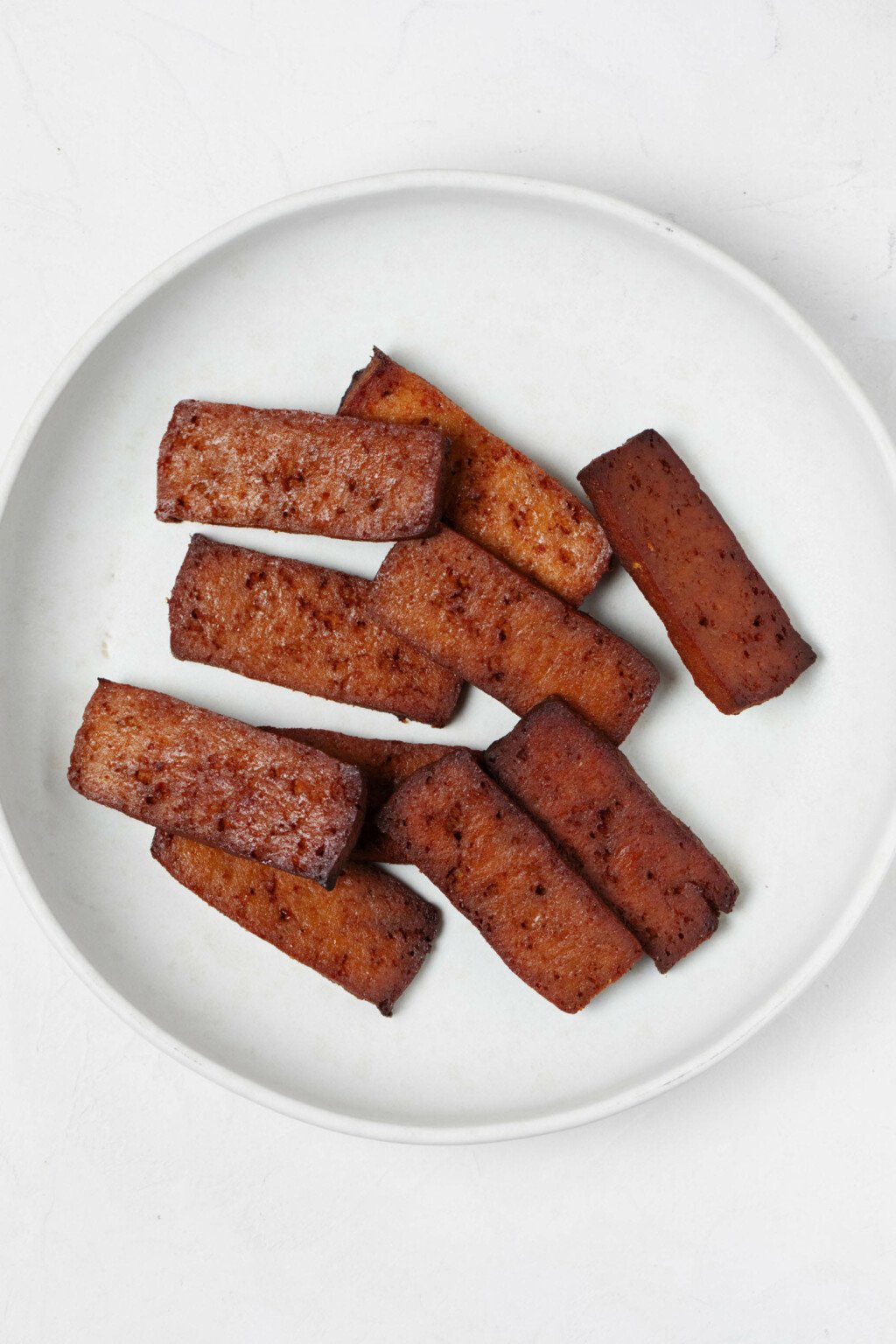
Seven or eight years ago, I found the SoyBoy brand of smoked tofu in a local grocery store. It was a game changer.
This wasn’t my first time trying a store-bought, marinated and baked tofu. A number of the major tofu brands in the US also sell seasoned tofu, in flavors like teriyaki, sesame ginger, or lemon pepper.
But it was the first time I tried a commercial seasoned tofu that I really fell in love with—one that could rival my homemade favorites, including baked balsamic tofu and baked teriyaki tofu cubes.
I started buying this brand of tofu as often as I could. I used it in bowls, pasta dishes, and toast; it even became part of the avocado toast recipe in my cookbook Power Plates.
I’ll still pick up the SoyBoy smoked tofu whenever I find it, but I’ve had an increasingly hard time locating it in stores.
On top of this, not all of my readers can find the SoyBoy products in their local stores. As a result, I feel bad referencing the smoked tofu in my recipes.
A project of the last two years has been making more of my own homemade vegan basics and staple foods, like dressings, vegan cheeses, refried beans, vegan mayo, and marinara sauce. Making these items at home is good for both my wallet and soul.
So it’s about time I created my own smoky tofu recipe.
Why smoky tofu?
Now that I’ve waxed poetic a little, I should say what exactly I love so much about smoky tofu.
Well, I’m a big fan of smoky flavors in general. You’ll find many recipes with that flavor profile on this blog, including pasta dishes, homemade refried beans, stuffed sweet potatoes, soup, and more.
Also, I’m a longtime plant-based eater.
Sometimes, the flavor that meat contributes to is smokiness. The use of smoky seasoning can add this dimension to vegan recipes, like vegan BLT sandwiches or sweet potato black bean burgers.
Star ingredient: smoked paprika
Most smoky tofu recipes call for liquid smoke. Liquid smoke, a flavoring that’s extracted from burning wood chips, is very powerful, and it definitely imparts smokiness.
That said, I’ve never been a huge fan of liquid smoke. I taste too much of that burnt wood flavor when I use it as a seasoning; unless I’m really conservative with it, I find that it’s a bit overpowering.
I find that smoked paprika, on the other hand, adds smoky flavor in a balanced way.
Smoked paprika is also known as pimentón, or Spanish smoked paprika. It’s made when red peppers are smoked and charred over oak leaves or fire, then dried.
The dried peppers are then ground into a fine powder, at which point they can be sold as a spice and used in cooking.
For me, smoked paprika has a softer, rounder, more subtle smokiness than liquid smoke. Yet it’s still undeniably, wonderfully smoky.
Increasingly, it’s not difficult to find smoked paprika in major grocery stores. However, you can also order it online, either through specialty shops or on major sites.
Is smoked paprika the same as regular paprika?
Pimentón is different from the Hungarian paprika—usually just labeled “paprika”—that you might also cook with regularly.
Both types of paprika are made from dried red peppers. But only smoked paprika is made from peppers that have been smoked before drying, which is why it has such a unique flavor.
Both regular and smoked paprika can sometimes be labeled as either “sweet” or “hot.” In both cases, I tend to go for the sweet version, since I’m sensitive to heat.
Most smoked paprika you’ll encounter in US grocery stores is the sweet kind. Sometimes you might see it labeled as pimentón dulce, to differentiate it from pimentón picante, the spicy/hot variety.
How to make baked smoky tofu
This recipe is really as simple as slicing, marinating, and then baking tofu. Here are the steps you’ll take.
Step 1: Slice your tofu
Cut the tofu into slices, working parallel to the short edge of the tofu block.
Your tofu slices should be between 1/4-inch and 3/8-inch thick, or 6mm to 1cm.
Step 2: Place the tofu into a flat storage container with a lid
I spend a lot of time marinating tofu and tempeh. I’ve learned that a rectangular, airtight storage container with a lid is the easiest vessel for doing this.
The flat bottom means that you can marinate things in a single or a couple even, flat layers.
Since I often marinate proteins like tofu or tempeh for 2 hours or longer—typically, I marinate them overnight while I sleep—the container also becomes a storage vessel.
As a bonus, it’s easy to disperse marinade by sealing the container with its lid and giving it a gentle shake.
Step 3: Prepare the marinade
The marinade for this recipe is simple: avocado oil (or another neutral vegetable oil), soy sauce (or tamari), vinegar, maple syrup, onion powder, and smoked paprika.
It’s the smoked paprika, of course, that’s the star ingredient here.
Step 4: Pour the marinade over the tofu slices
Once you whisk that marinade together, you simply need to pour it over the tofu slices in the container.
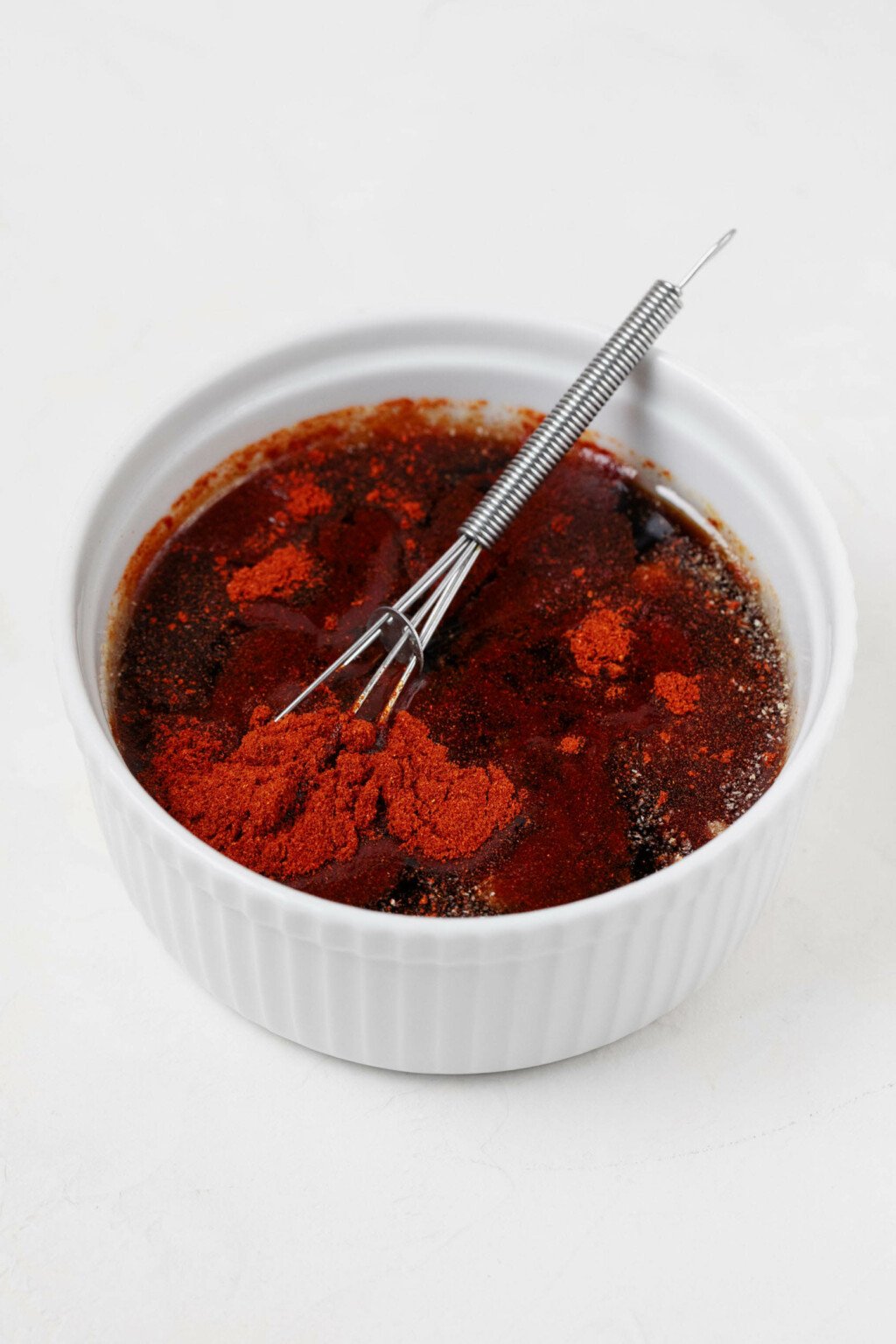
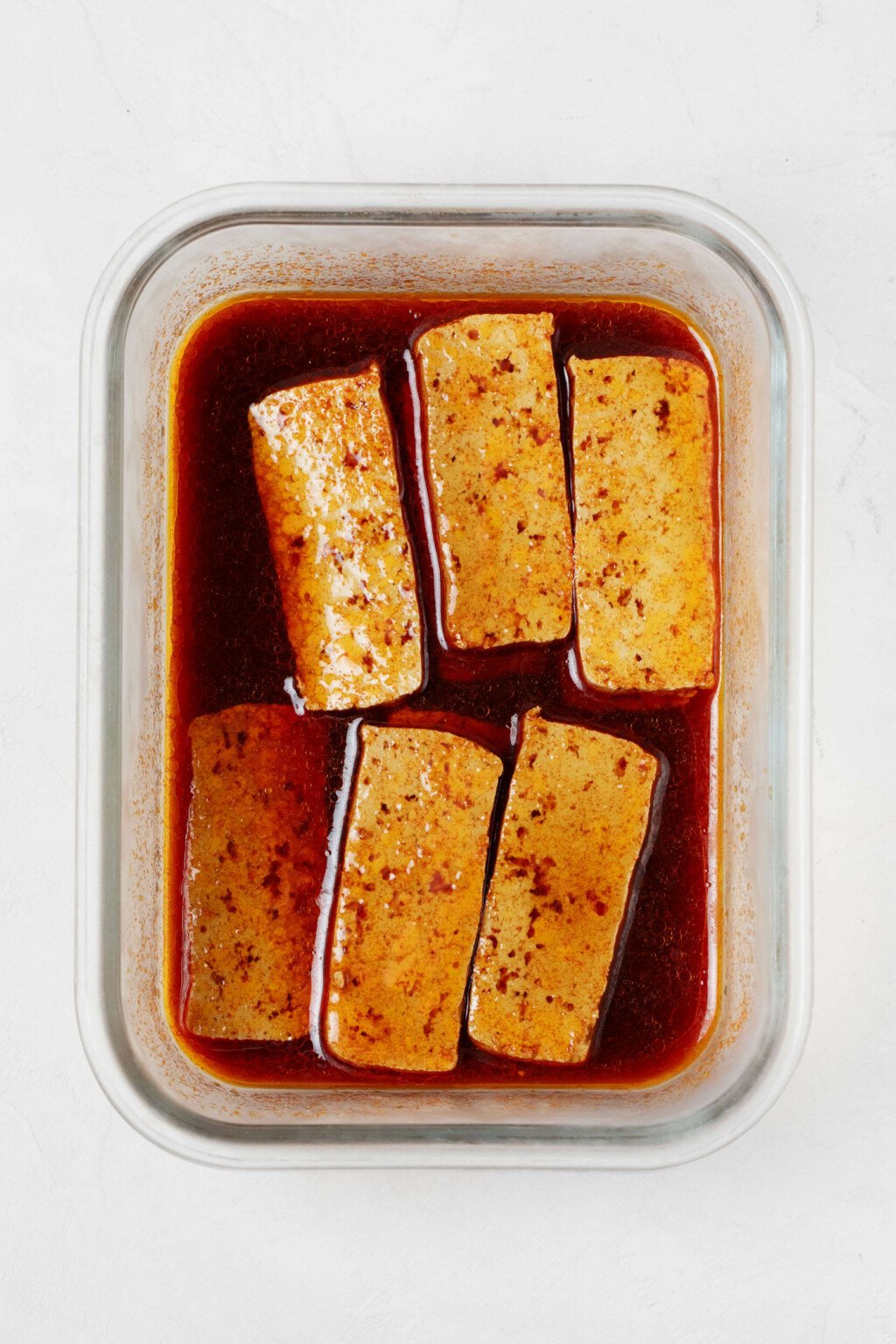
Step 5: Marinate overnight
Many of my seasoned tofu and tempeh recipes call for marinating the protein for 2 or more hours.
In the case of this smoky tofu, though, I recommend marinating overnight. The tofu will absorb a lot more flavor that way, and depth of flavor is especially important in this recipe.
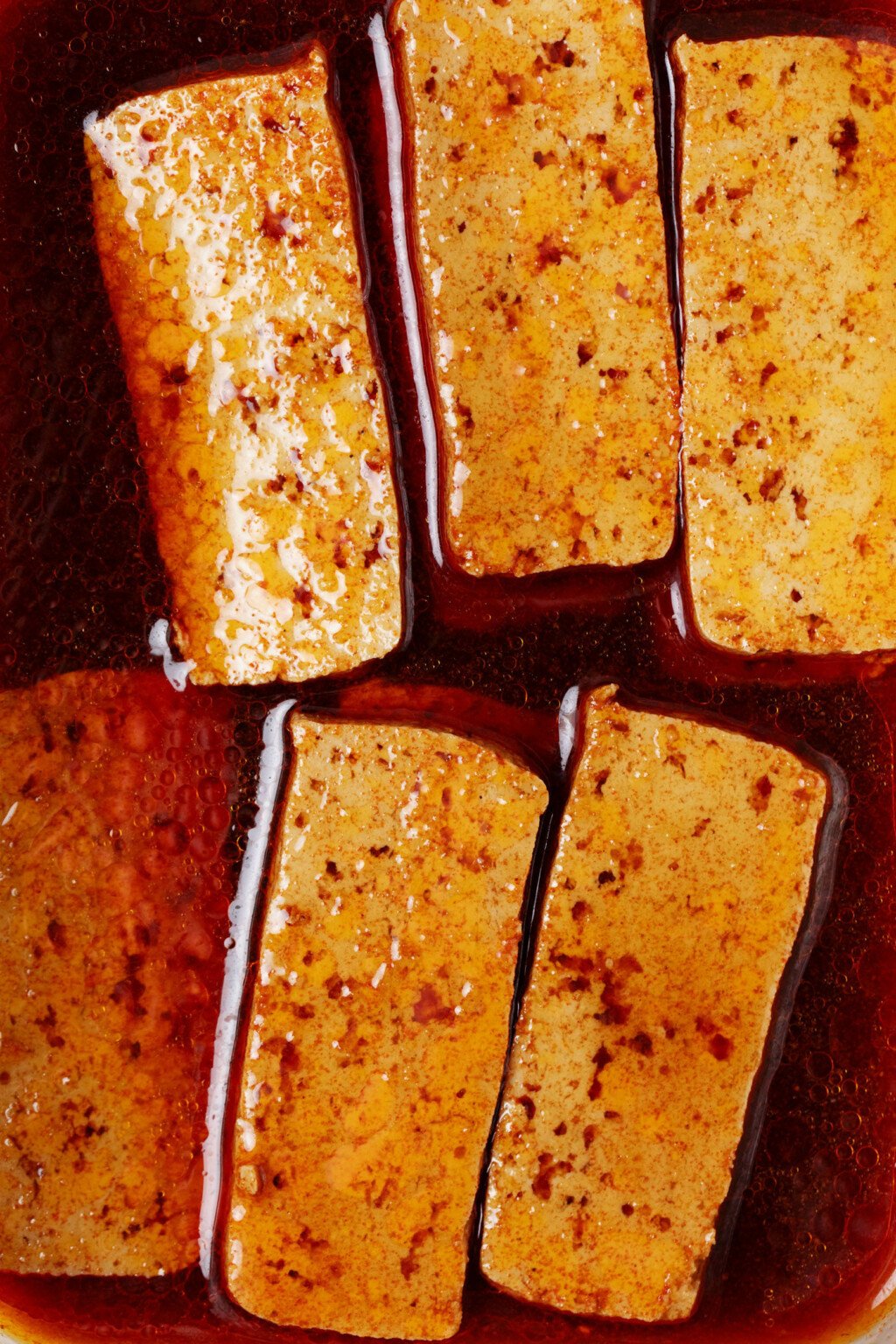
Step 6: Bake low(ish) and slow(ish)
“Low and slow” refers to cooking anything at a low temperature for a long time. This can be a means of achieving a super tender texture or a lot of flavor development.
The 325°F / 165°C bake temperature for these tofu slices isn’t very low, but it’s definitely lower than the oven temperature that I often use for baked tofu.
I find that cooking at a more moderate heat for a long period of time, is appropriate for this recipe. It seals in the smoky flavor, and also, it gives the tofu slices a slightly dehydrated, firm texture.
I like that texture for sandwiches and salads. When I think about it, I actually eat a lot of soft-textured food—soups, dips, grains and beans—so I appreciate a protein that’s more chewy once in a while.
The tofu slices will bake in the oven for about forty minutes total. Be sure to flip them on their baking sheet halfway through cooking.
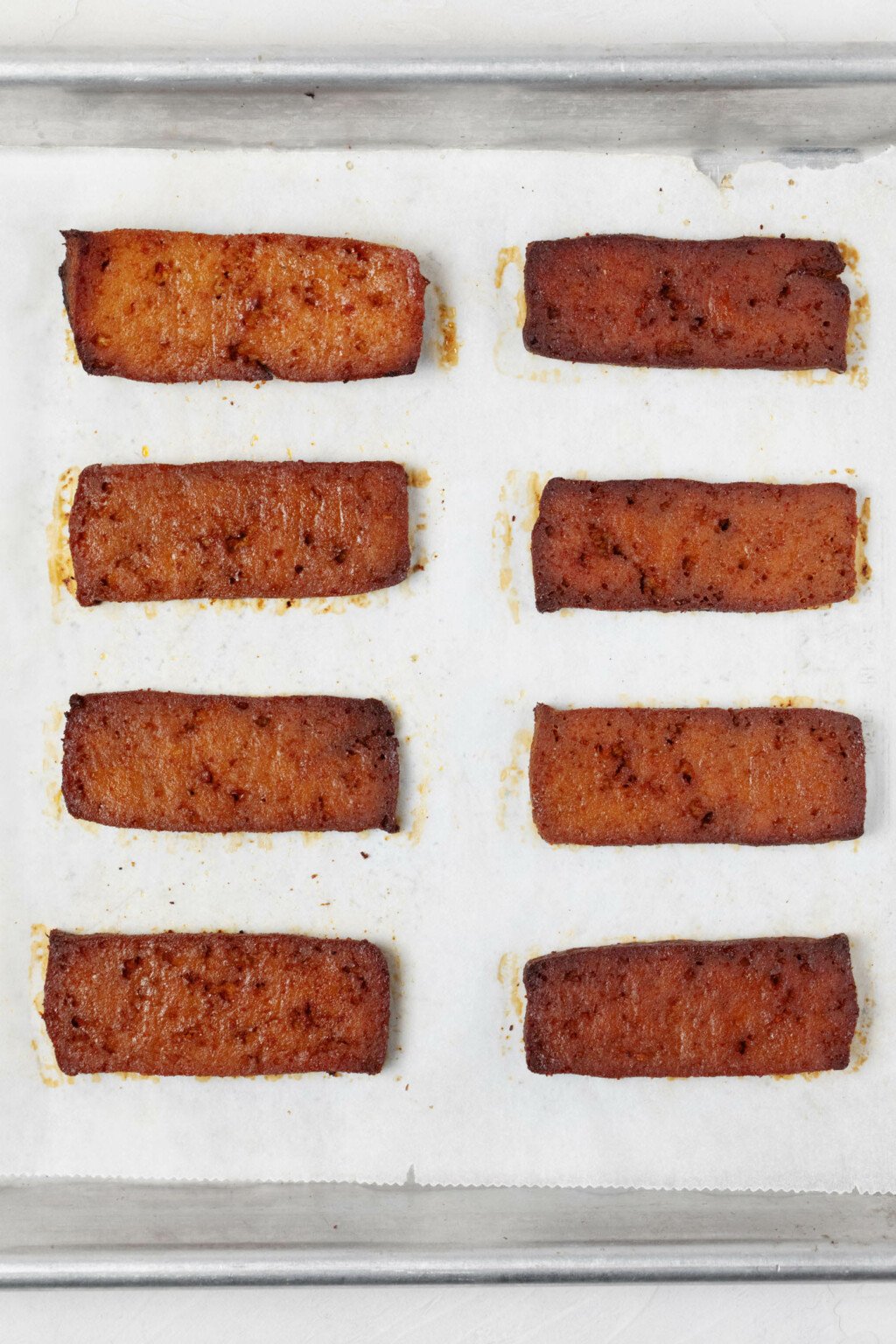
Step 7: Enjoy!
Use the tofu wherever you’d like a smoky, savory vegan protein.
Ways to use baked smoky tofu
My favorite way to use these chewy, savory slices is in sandwiches.
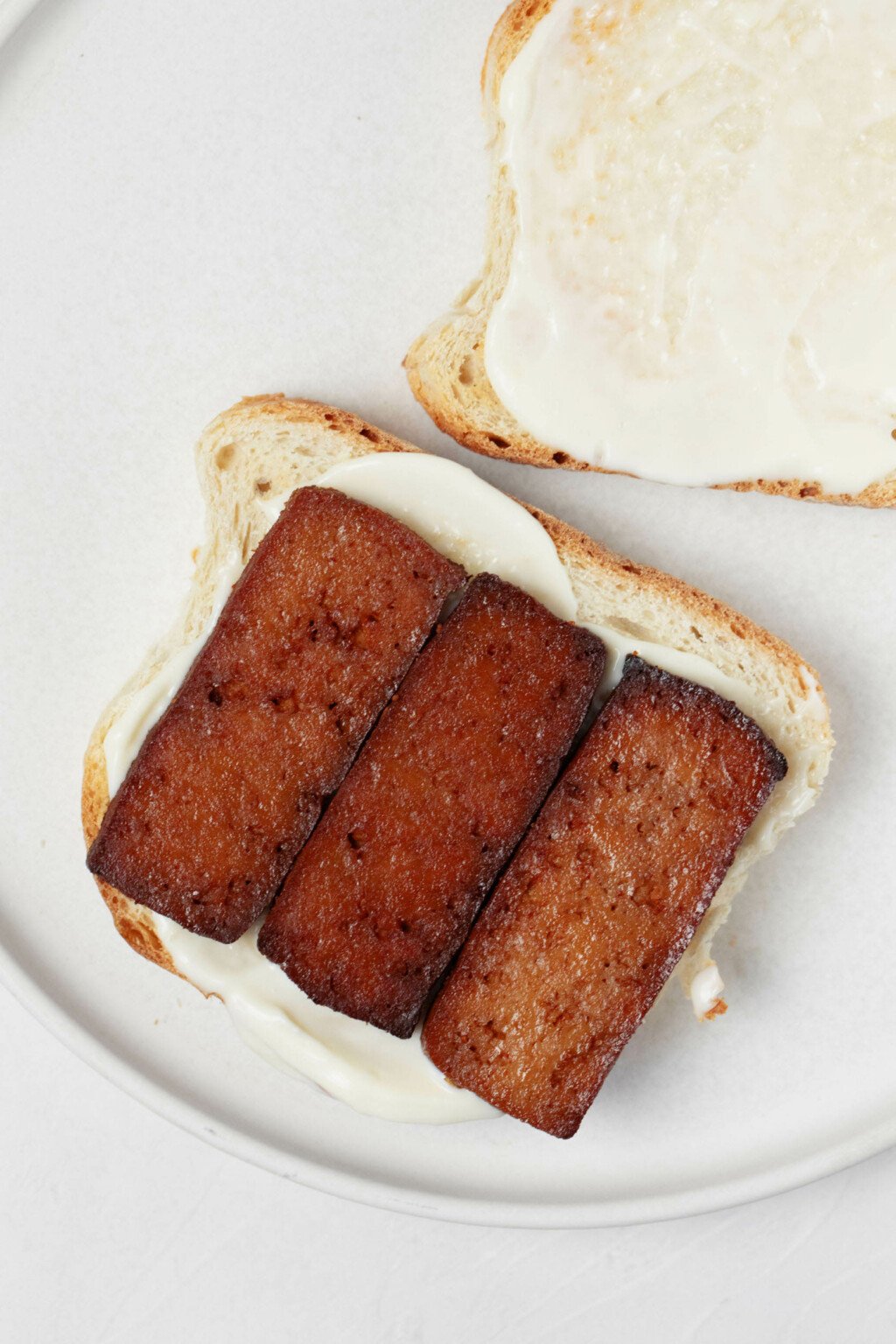
I’ll share one such sandwich recipe with you soon—I ate it a lot this past summer.
The possibilities don’t end there, though. I love adding the slices to a breakfast plate in the same way that you might add a side of plant-based sausage or bacon; it’s an especially good accompaniment to my chickpea scramble.
I’ve added baked smoky tofu to many a grain bowl and salad, too.
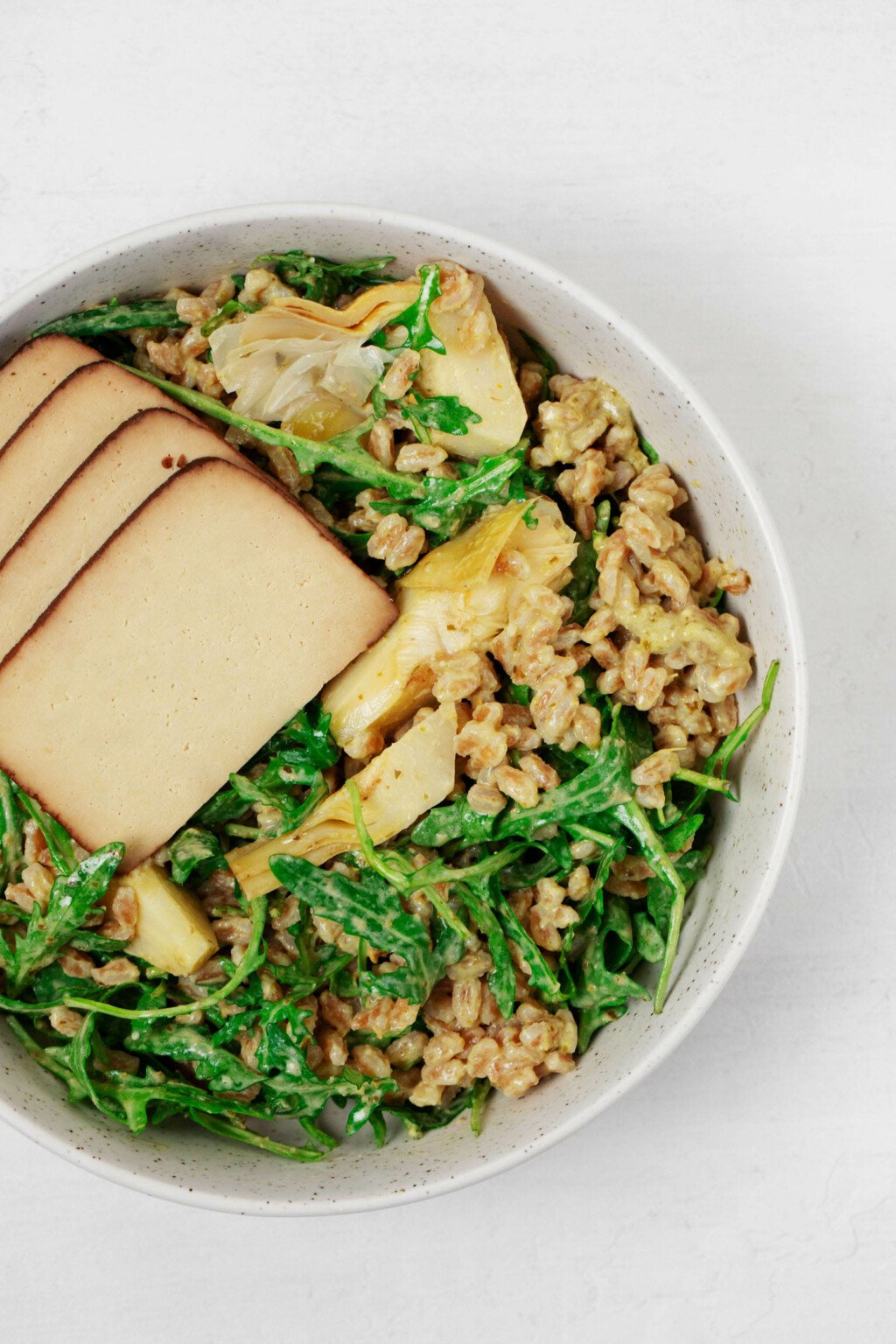
For example, in my pesto farro salad with kale, herby vegan pesto meets deeply savory, smoky tofu.
It’s the sort of ingredient combo that sounds a little odd, on paper, but it really works.
As another example, the smoky tofu contrasts with bright, citrusy flavors in my quinoa citrus salad with tofu.
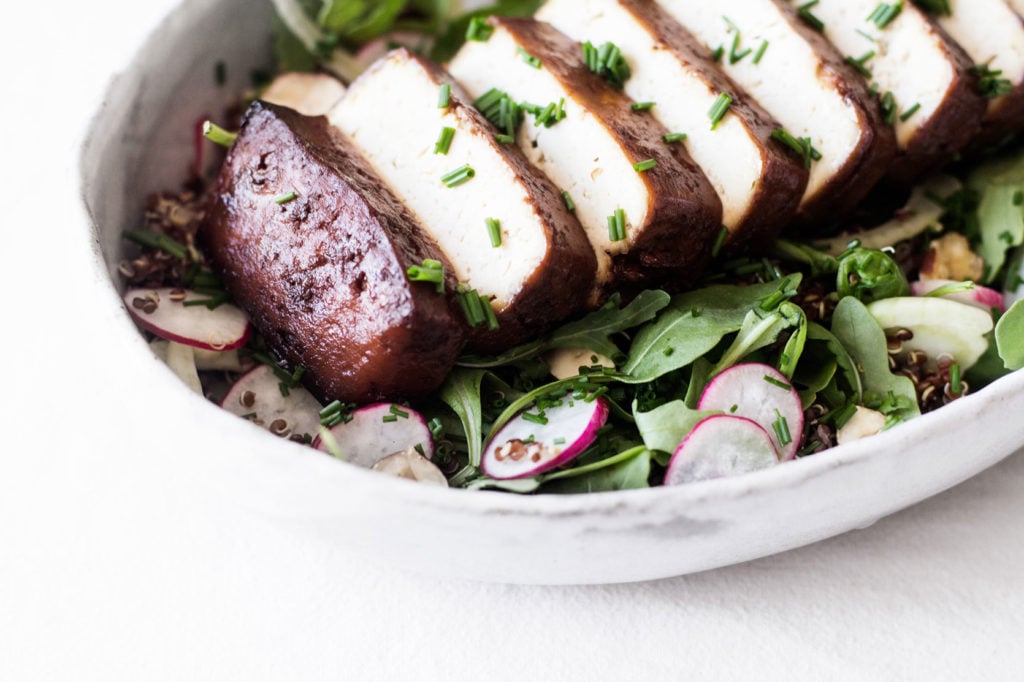
Finally, smoked tofu can be a fun ingredient to add to either soup or porridge. Specifically, I love to use it as a topping for my vegan savory oatmeal with greens and tofu.
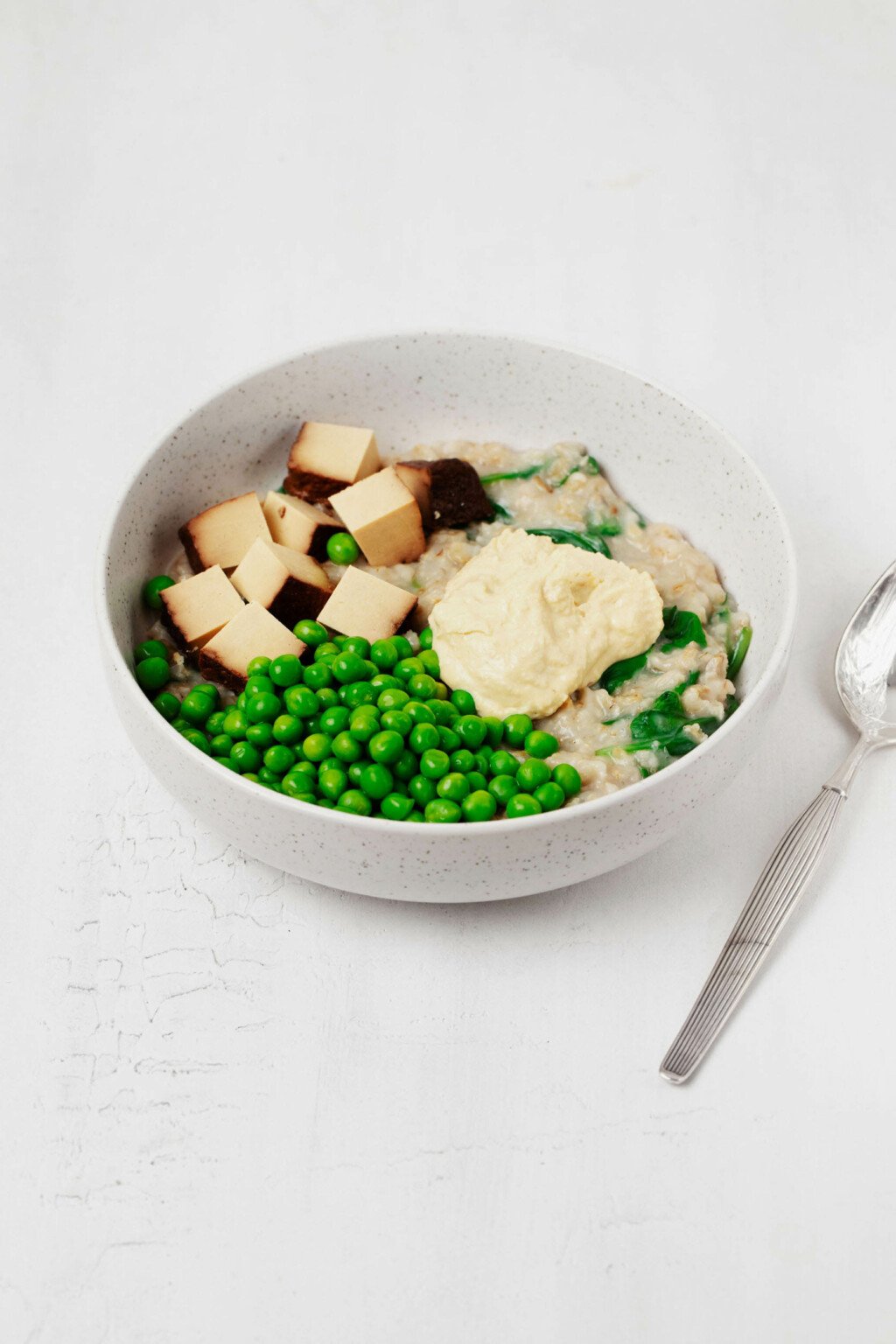
You could also add the tofu to my savory steel cut oatmeal.
As you can see, there are lots of possibilities here!
What type of tofu should I use?
My tofu of choice for this recipe is “super firm” tofu, which is sometimes labeled “high protein” tofu.
Super firm tofu has had a lot of its water content pressed out prior to packaging. It has a denser, more concentrated texture and firmer “bite” than regular extra firm tofu.
Because the tofu is compressed, all of its nutrition becomes denser. This includes its protein content.
A couple of major brands that make tofu, Nasoya and Wildwood, sell super firm tofu across the US.
If you can’t find this type of tofu near you, don’t worry. Regular tofu labeled as “extra firm” will also work well in the smoky tofu recipe.
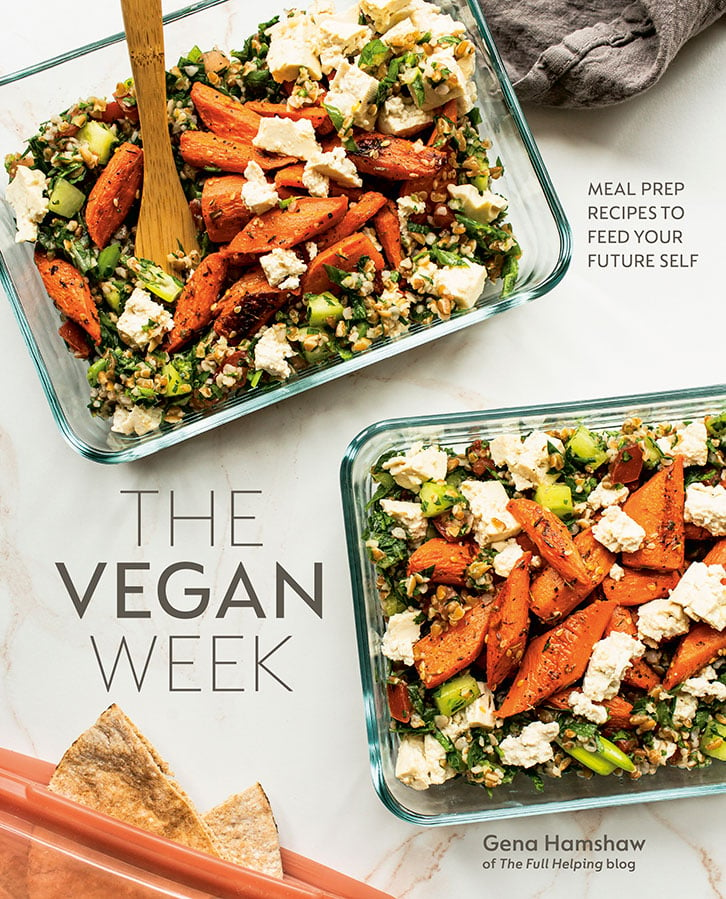
The Vegan Week
Embrace the joy of eating homemade food every day with the hearty and wholesome recipes in The Vegan Week.
Whether you have three, two, or even just one hour of time to spare, The Vegan Week will show you how to batch cook varied, colorful, and comforting dishes over the weekend.
Meal prep and storage
This tofu recipe is a good one to add to any weekly vegan meal prep routine.
Once baked, the tofu slices can be stored for up to 5 days in an airtight container in the fridge.
They’re also freezer-friendly! You may find that the tofu slices change texture a bit after defrosting, but they’ll still be chewy, delicious, and a protein-rich component for meals.
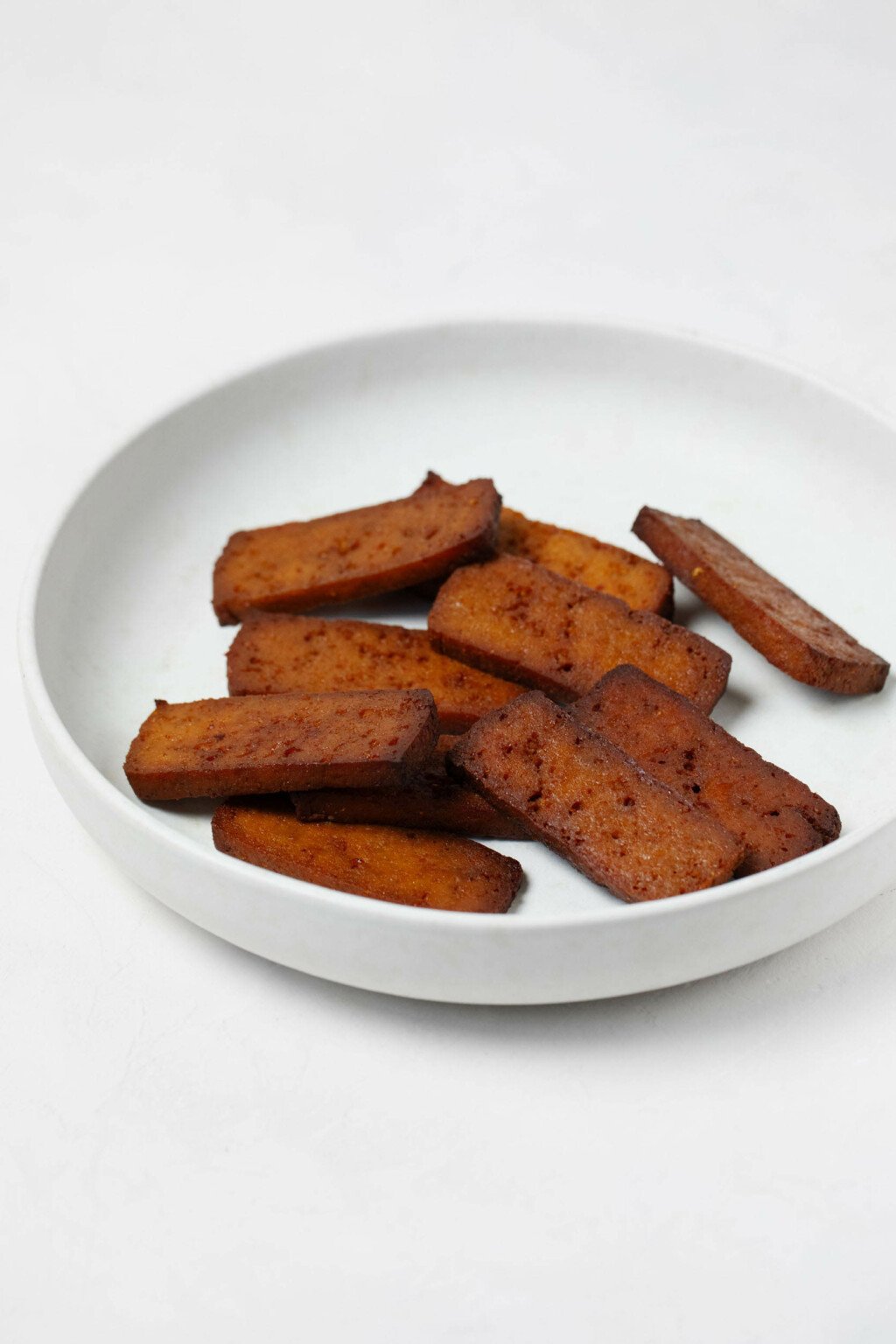
For more on meal prep and defrosting, you can check out my beginner’s guide to vegan meal prep.
And, so that you can start adding this savory goodness to your plates sooner, rather than later, here’s the recipe!

Baked Smoky Tofu with Smoked Paprika
Author –Ingredients
- 1 1lb “super firm” or “high protein” style tofu; if this type of tofu is unavailable, substitute 14 ounces extra firm tofu that has been pressed firmly to remove any extra moisture (455g super firm tofu or 420g regular extra firm tofu)
- 2 tablespoons avocado oil
- 2 tablespoons soy sauce, tamari, or Bragg Liquid Aminos
- 1/4 cup vegetable broth or vegan chick'n style broth (60ml)
- 1/4 cup rice vinegar (60ml)
- 2 teaspoons maple or agave syrup
- 1/2 teaspoon onion powder
- 2 teaspoons smoked paprika
Instructions
- Slice the block of tofu crosswise into slices that are 1/2-inch/1.3cm thick. Place these slices into a large, flat, rectangular container with a lid, ideally in a single layer.
- Whisk the avocado oil, soy sauce, broth, vinegar, maple syrup, onion powder, and smoked paprika together in a small bowl or Pyrex measuring cup. Pour this marinade over the tofu slices. Flip the slices, so that both sides can become coated in the marinade. Cover the container and transfer it to the fridge. Marinate the slices overnight.
- Preheat your oven to 325°F / 165°C. Remove the tofu slices from the marinade and arrange them in a single layer on a nonstick baking sheet (or a baking sheet that has been lined with parchment or foil).
- Bake the slices for 20 minutes. Use tongs or a spatula to flip them, then bake them for another 15-20 minutes, or until the slices have darkened and are drying and crispy at the edges. Remove the slices from the oven. Serve or store in an airtight container in the fridge for up to 5 days.
In a year that was marked by inconsistent capacity to develop new stuff for this blog, I feel happy that I was at least able to share a lot of the homemade vegan basics that keep me going, week to week.
This baked smoky tofu is definitely high on that list of essentials. I hope you’ll enjoy it soon, and I can’t wait to hear about how you use it.
xo
This post may contain affiliate links. If you use these links to buy something I may earn a commission. Visit my privacy policy to learn more.
Method: Oven
Ingredients: Tofu
Dietary Preferences: Gluten Free, Tree Nut Free, Vegan
Recipe Features: Meal Prep

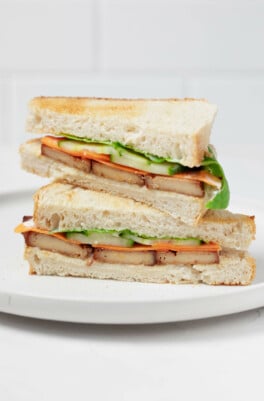
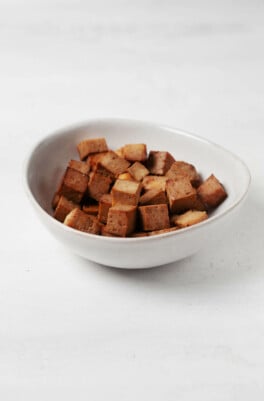
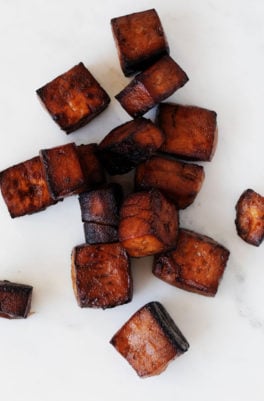
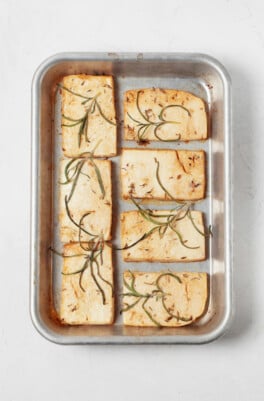
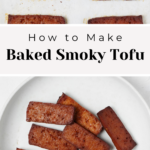
Leave a Comment
Very good recipe! Simple preparation….I found that I had to bake it about 10-15 minutes longer to reduce the moisture. After baking,I cubed the tofu and sautéed it in chili oil, then I used it as a ham replacement in split pea soup.
Thank you for sharing your recipe and insights!
What delicious ways to use the tofu, JPa! Thanks for sharing and glad that you enjoyed.
So good. Another batch in the oven now destined for TLTs this weekend!
I love your vegan basics recipes and am so glad you were able to share so many of them with us.
Loving the new cookbook too.
Amazing work, Gena!